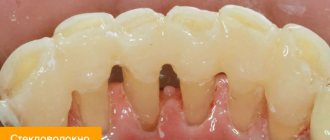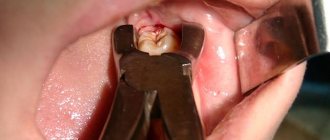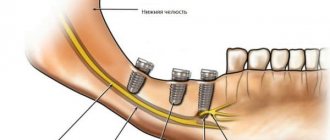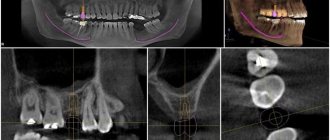When is surgery needed for bite problems?
Specialists resort to surgical intervention when conventional orthodontic treatment methods have failed.
- Wearing permanent braces.
- Treatment with aligners.
- Installation of trainers (the method is suitable for children).
- Installation of veneers (used in mild cases of malocclusion).
- Laser bite correction.
Braces or removable aligners (teeth aligners) in most cases cope with the problem. However, with significant skeletal deformations, which are expressed in the disproportionate size of the jaws, their improper closure, and deformation of the chin, these methods are powerless.
Complex bite pathologies, for example significant closure defects, cannot be treated by wearing orthodontic structures for a long time. Orthodontists do not always take this fact into account. Meanwhile, focusing only on orthodontic treatment can have significant negative consequences for the patient: tooth dislocations or pathologies of the temporomandibular joint are quite possible in this case. And they bring with them completely different problems: pain in the head and back, disorders of the gastrointestinal tract and other diseases that at first glance are difficult to associate with malocclusion pathologies.
Underdevelopment of the chin, drooping corners of the lips
The formation of a distal bite is based on the discrepancy between the sizes of the upper and lower jaws. In this case, the lower one turns out to be noticeably shorter. The lower dentition is located posterior to the upper, which often leads to disruption of the closure of the incisors and canines. With a pronounced degree of defect, a so-called traumatic bite is formed, in which the incisors, without contact with their antagonists, rest against the gum mucosa and damage it.
The patient develops a so-called “bird profile”, in which the nose is the most protruding point of the face, and the chin is significantly slanted posteriorly. The lips are usually thin, the lower lip is sunken, and the mouth is always slightly open. The tone of the orbicularis oris muscle is reduced, which is manifested by drooping of the corners of the mouth. Excess soft tissue in the lower third of the face leads to the formation of a double chin, which is especially pronounced in obese patients.
The distal (posterior to normal) position of the lower jaw blocks the airway. And since a person needs to breathe, a complex of compensatory changes is formed at the level of posture. In order to clear the airways, a person stretches his head and neck forward. In order to maintain balance, the back bends in the thoracic region (hunched), the deflection in the lumbar spine increases, which causes the stomach to bulge forward. The position of the pelvis and feet changes.
People who are accustomed to the arrangement of their teeth on the jaw often see only the external manifestations of the problem (double chin and thin lips). Consequently, they solve the problem by eliminating its external manifestations: they resort to liposuction of the chin area, and inject fillers into the lips. In this case, a much more rational solution is to correct the position of the teeth on the jaws. In young patients, braces can correct jaw growth. In adults, severe forms of distal occlusion are eliminated by orthognathic surgery.
Orthognathic surgery: what is it?
This is a surgical correction of the bite. During the operation, not only the bite is corrected, but also externally noticeable facial asymmetry: the surgeon shortens or lengthens the jaw, corrects its location, and changes the size of the chin. At the same time, along with the bone structure, soft tissues are also transformed. Therefore, a person’s appearance changes for the better.
When orthognathic surgery is contraindicated
Surgeons will not undertake such an operation if the jaws have not yet formed - in adolescents and children. We also highlight such contraindications as:
- cardiovascular diseases;
- problems with blood clotting;
- the presence of precancerous and cancerous diseases;
- diseases of the endocrine or skeletal system;
- diabetes in some stages;
- disorders associated with mental state.
Specialists will most likely refuse those patients who think that this operation can improve their appearance, even without problems with their bite. With all the possibilities of orthognathic surgery to rejuvenate the patient and improve his appearance, it primarily solves serious problems with bite and should not be perceived as a beauty procedure.
Can complications occur after orthognathic surgery?
The result of this surgical intervention is completely predictable, so complications after surgery in most cases should not occur. There may be temporary numbness of the lips. However, in the postoperative period this is acceptable and even helps the patient avoid pain. When the previous sensitivity of the lips returns, there is no more pain.
You can insure yourself against the negative consequences of surgery if you seek help from reliable specialists.
Do I need to prepare for orthognathic surgery?
The preparatory period can last more than one week. As mentioned above, orthognathic surgery is completely predictable. Therefore, at the first stage, the specialist decides what results should be after treatment:
✔
determines the necessary future parameters;
✔
finds the maximum possible number of closures between opposing teeth;
✔
monitors how the results of the operation will affect the patient’s appearance.
In most cases, when preparing for surgery, surgeons use special 3D modeling tools for the result. Thanks to the software, a template is obtained and the paths that will lead to the expected effect of orthognathic treatment are found.
Then orthodontic treatment with braces or aligners begins. This can take from several months to a year and a half. Once the dentition is aligned, orthognathic surgery can begin.
Orthognathic intervention takes 4-6 hours. Then the patient remains in the clinic for another 3-4 days under the supervision of the attending physician. Afterwards you can return home, and after 3 weeks you can go back to work.
Reduction of the lower third of the face
The reason for the discrepancy between the size of the lower part of the face and the rest may be underdevelopment of the jaws or microdentia. Insufficient length of the jaw arches leads to crowding of teeth, which do not have enough space in the dentition. Reducing the size of dental crowns with normal sizes of the alveolar processes of the jaw bones leads to the formation of noticeable gaps between the teeth. The height of the bite decreases.
Metal braces help to correct the size of the jaws in young patients. To obtain a satisfactory result, it is necessary to begin orthodontic treatment at an age when the jaws are actively growing. Adults still have the opportunity to make the defect less noticeable by straightening their teeth. Micrognathia can be corrected using aesthetic dental restoration.
How is surgical correction of bite performed?
There are 3 main types of orthognathic operations:
- maxillary osteotomy - the surgeon makes bone cuts in the mouth above the teeth and below the eye sockets to realign the upper jaw, including the palate and upper row of teeth. The jaw is fixed using a special splint, which will securely fix it in the correct position in relation to the soft tissues,
- osteotomy of the lower jaw - the doctor makes bone incisions behind the molars along the jaw downwards and, using a titanium plate, moves the lower jaw to a new place,
- Genioplasty is necessary when aligning the midline of the patient’s face, which runs between the two upper front incisors. With this method, the surgeon cuts off the chin part of the lower jaw and moves it to the correct position.
They do not leave scars on the face, because... performed inside the oral cavity. They are performed after 18 years of age, when jaw growth is completed, only under general anesthesia and for 1-6 hours.
Jaw surgery
Orthognathic surgery can change the size, shape and position of the jaws. As a result, bite correction, restoration of facial symmetry, as well as improvement of respiratory and chewing functions, elimination of diction defects and other consequences of skeletal abnormalities.
There are 3 types of operations:
- maxillary osteotomy – movement of the upper jaw,
- mandibular osteotomy – movement of the lower jaw,
- genioplasty – work with the chin.
What to do in the postoperative period
In addition to following all the instructions of the attending physician, you need to pay attention to several important points.
- You need to apply ice to the jaw area and apply ointment or gel for swelling.
- Strictly observe daily routine and hygiene: get up, walk around, do not smoke, eat.
- Avoid heavy objects, do not bend over, avoid sudden movements.
- Do not hesitate to seek help if there is any discomfort.
The second most popular question concerns nutrition during the postoperative period. Contrary to expectations, the straw does not always help. According to reviews from people who have undergone this operation, it is better to use a small spoon. The only difficulty with eating usually is that it takes longer. In the hospital, during the postoperative period, patients are prescribed a gentle diet, in which dishes are served pureed.
Immediately after returning home, you can choose your usual menu, guided by your preferences. However, at first, the food should still be pureed. If necessary, you can consult a gastroenterologist.
Should a malocclusion be corrected?
People, regardless of age, rarely think about the possible consequences of malocclusion on health, given that careless chewing of food harms the digestive system, poor posture leads to impaired coordination of movements, and causes degenerative processes in various parts of the spine. If so, let’s focus on the aesthetic component of orthodontic treatment.
Orthodontists are able to diagnose malocclusion based on external signs, without looking into the patient’s mouth. Most people also note signs indicating the presence of skeletal abnormalities leading to the formation of malocclusions. Another thing is that rarely does anyone evaluate these signs from a medical point of view; more often the person is simply considered ugly. And if a person also has a repulsive smile with crooked yellow teeth, then interpersonal communication can be significantly impaired.
Correction of malocclusions must be corrected in patients of all ages. Parents should not put off a visit to the orthodontist in the hope that “the child will outgrow it.” Adults who did not receive orthodontic treatment in childhood will benefit from wearing braces or aligners, as they will save teeth from abrasion, improve diction, and normalize nasal breathing. And a perfect smile never hurt anyone!
What is the cost of orthognathic surgery?
An accurate calculation of the cost of surgical intervention can only be done individually after consultation with an orthodontist and a surgeon in the clinic of your choice. Plus, you will always additionally need to take a panoramic image or computed tomography of the maxillofacial region, condylography. In addition, correcting the bite may require the participation of related specialists.
When searching for a suitable dentist, pay attention to the clinic’s special offers: in some cases, you may be offered to pay for services in installments or in parts.
Stage III - final orthodontic correction
Goals of the stage: creation of correct interdental contacts, finalization and stabilization of the bite.
Photo after surgery to correct the bite:
The patient is prescribed to wear orthoelastics. The orthodontist gave the patient a plan for wearing orthoelastics. They need to be changed every day, fastening each time according to the established pattern. You need to wear orthoelastics constantly, as prescribed by your doctor, this affects the results of treatment.










